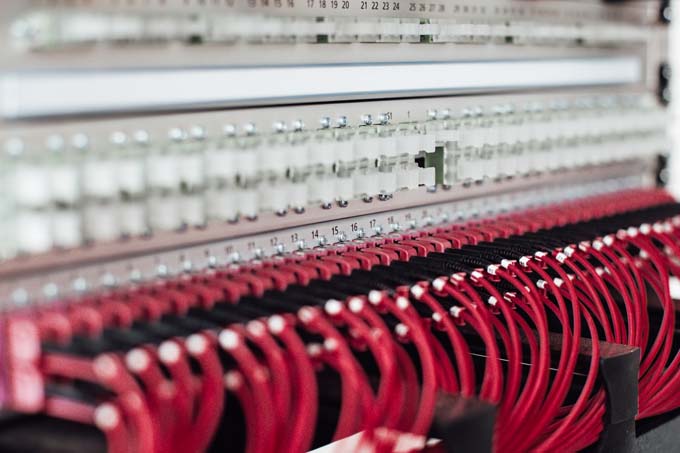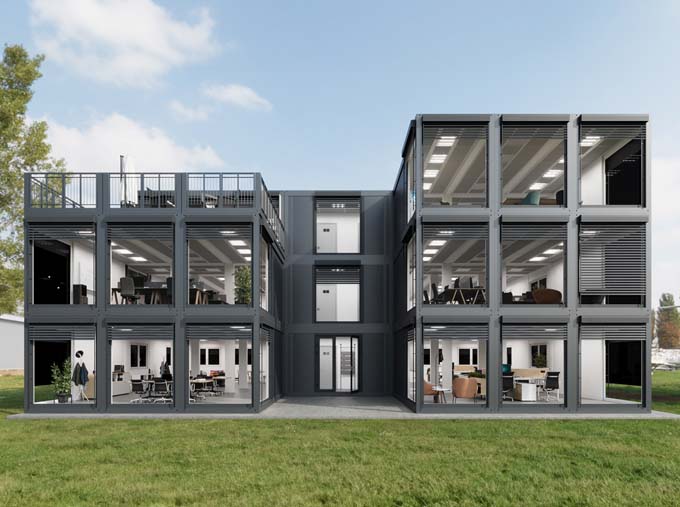More sustainability in data centers
A study commissioned by Nutanix, a specialist in hybrid multi-cloud computing, has examined the potential impact of data center models on energy efficiency and carbon footprint. The results are now expected to help business decision makers not only reduce energy costs, but also significantly reduce the carbon footprint of their data center resources.

The current energy crisis has led to skyrocketing energy costs across Europe. This makes energy efficiency and supply a top priority for CIOs and data center providers. Events such as COP27 also increased awareness among companies of all sizes and industries of the need to put sustainability and climate protection at the top of their strategic agenda. But while the majority of companies want to do just that, there is as yet little objective information about what options are available to them, how their benefits compare, and what risks are inherent in different approaches. This is particularly true in the areas of IT infrastructure and the data center, which must be high on the agenda if companies are to successfully implement their plans to achieve the goal of climate neutrality.
Data centers need a lot of energy
"Data centers and digital infrastructures as a whole are responsible for a significant portion of the world's energy consumption, leaving a significant carbon footprint," said Sammy Zoghlami, SVP Nutanix EMEA. "In EMEA alone, data centers consume over 90TWh per year. This is equivalent to the emissions level of approximately 5.9 million vehicles - or 27 million metric tons of CO2 equivalents (CO²e). Action in this area can therefore have a significant impact, but must be balanced with the need for enterprises to effectively maintain and strengthen their competitiveness in increasingly digital markets. That's why Nutanix commissioned this study, which examines in detail how different data center technologies compare when companies weigh the pros and cons of their efforts to meet their carbon neutrality goals."
The central results
The findings of the study can be summarized as follows: Together with automation, innovative cooling systems and renewable energy, the transformation of traditional 3-tier architectures to next-generation models - such as hyperconverged infrastructures (HCI) - will be key to realizing the potential savings in data center energy consumption and carbon footprint. Measurable benefits could be realized by a wide range of enterprises - from large hyperscalers and managed service providers to large enterprises and smaller businesses. Compared to traditional 3-tier IT platforms, next-generation HCI architectures could potentially reduce energy consumption and carbon footprint by approximately 27 percent annually. Within the EMEA region, HCI transformation has the potential to reduce energy consumption by 56.7 TWh and emissions by 14.2 million tons of CO²e between 2022 and 2025. By 2025, a complete shift to HCI in the data centers could be
- Germany's potential 11.9 TWh of energy and nearly 3.69 million tons of CO²e,
- of the UK potentially 8.1 TWh of energy and 1.8 million tons of CO²e (equivalent to about 400,000 fewer cars on the road),
- France's potential 8.8 TWh of energy and 440,000 tons of CO²e,
- of the Netherlands potentially 3.3 TWh of energy and, with its above-average emission levels, just over one million tons of CO²e,
- of the Middle East and Africa could potentially generate 4 TWh of energy and around 2.4 million metric tons of CO²e.
save.
Large collocation data centers typically offer a much lower PUE (Power Usage Effectiveness) value than typical on-premises facilities. Converting them to HCI architectures could potentially increase energy savings to around 30 to 40 percent. Long-term power supply contracts, known as power purchase agreements (PPAs), could also give next-generation collocation data centers access to renewable energy, contributing to the company's carbon neutrality goal without having to invest in carbon credits. Companies planning to move to an HCI architecture for their on-premises data centers should also evaluate next-generation cooling technologies in light of increased energy prices.
The data center industry has produced significant improvements in energy efficiency over the last few decades and is now one of the most advanced - both in terms of energy efficiency and decarbonization. Nonetheless, energy demand will increase significantly in the future, leading to a large amount of carbon dioxide emissions. Innovative technologies such as HCI could create considerable efficiency potential and have a strong impact on energy cost savings.
The study
The findings and predictions in the study commissioned by Nutanix are based on a March analysis this year developed by independent research and consulting firm Atlantic Ventures. The research compares and contrasts different technology models, particularly traditional 3-tier architectures and newer hyper-converged infrastructure (HCI) approaches. To this end, Atlantic Ventures modeled a manufacturing company typical of Western Europe to estimate energy consumption and carbon footprint of data centers in different locations. As part of this modeling exercise, the study examined the potential effects of hyperconverged infrastructures (HCI) on data center energy costs and CO2 emissions. It makes the first ever prediction of aggregate savings potential in the EMEA region and individual national markets. The study results show what a broad transformation towards modern data center architectures could achieve in terms of energy efficiency and climate protection.
Says Dr. Carlo Velten, CEO at Atlantic Ventures: "The aim of this report is to provide business decision-makers with suggestions and food for thought on how to design an energy-efficient and climate-friendly IT infrastructure - in particular hyperconverged infrastructures, whose technology we examine in detail and whose potential benefits we quantify at both European and national level. We hope the study will be useful and provide an insight into understanding what a broad transformation towards modern data center models can mean for energy efficiency and climate protection."
Source: Nutanix









